Anvils are powerful, durable tools that have been indispensable to metalworking for centuries. Known for their massive weight and sturdy construction, anvils provide a stable surface on which metals can be hammered, shaped, and cut. These essential tools are primarily made from steel and are widely used in blacksmithing, industrial fabrication, and even by hobbyists working on small metal projects. In this comprehensive guide, we’ll explore the different types of anvils, their uses, and how to choose the right one for your needs.
Key Components of an Anvil
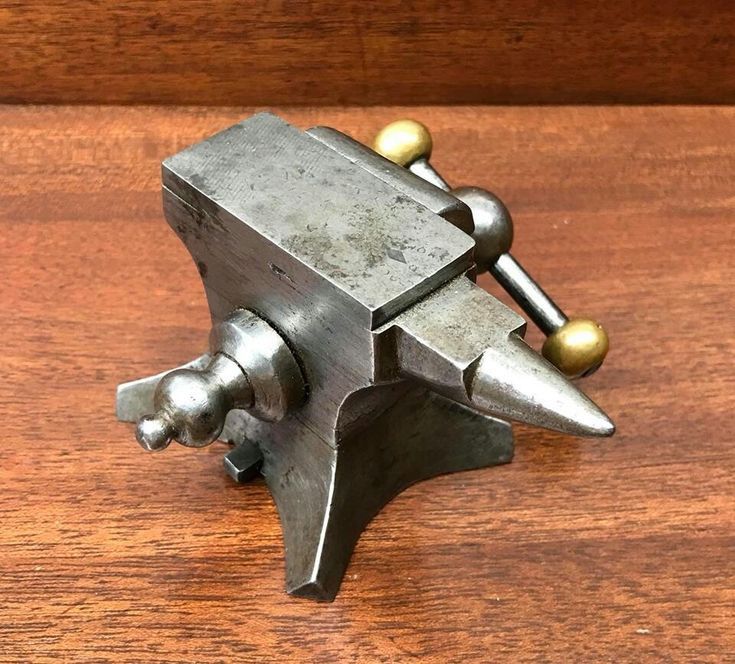
To understand anvils better, it’s helpful to know their basic components, each serving a unique purpose:
- Face: The large, flat top surface where most of the work takes place. It’s usually hardened to withstand heavy hammering.
- Horn: A rounded, tapered projection used for bending and shaping metal into curves and loops.
- Step: A small, flat area located between the face and the horn, often used for cutting.
- Hardie Hole: A square hole on the face of the anvil used to hold hardy tools, such as chisels and cutters.
- Pritchel Hole: A round hole for punching and bending rods, commonly used in blacksmithing.
Understanding these parts can help you use an anvil effectively and ensure you choose the right one for specific metalworking tasks.
The Evolution of Anvils: From History to Modern Times
The origins of anvils date back to ancient times, where they were originally made from stone and later from bronze and iron. By the Middle Ages, anvils were typically made of wrought iron, with a steel face welded onto the top for added durability. Today, most anvils are made from solid steel, allowing them to withstand heavy-duty work. Their design has remained relatively consistent, reflecting the timelessness and utility of this indispensable tool.
Types of Anvils and Their Uses
There are various types of anvils, each tailored to specific applications. Let’s take a closer look at some of the most common types and their unique characteristics:
1. Blacksmith Anvils
Blacksmith anvils are perhaps the most recognized type and are often seen as the quintessential anvil. These anvils are robust and versatile, making them ideal for general metalworking tasks such as hammering, shaping, and forging.
- Key Features:
- Large, flat face for extensive hammering.
- Rounded horn for bending and curving metals.
- Hardie and pritchel holes for tool insertion and punching.
- Uses: Blacksmith anvils are perfect for forging and shaping metal in both traditional blacksmithing and modern fabrication shops.
2. Farrier Anvils
Farrier anvils are specifically designed for shaping and fitting horseshoes. With a narrower face and a more portable design, these anvils allow farriers to maneuver shoes with precision and ease.
- Key Features:
- Narrower face for accurate shaping.
- Specialized horn for bending horseshoes.
- Lightweight and portable for use on-the-go.
- Uses: Best suited for farriers who need a specialized tool for shaping and adjusting horseshoes on-site at farms or stables.
3. Bench Anvils
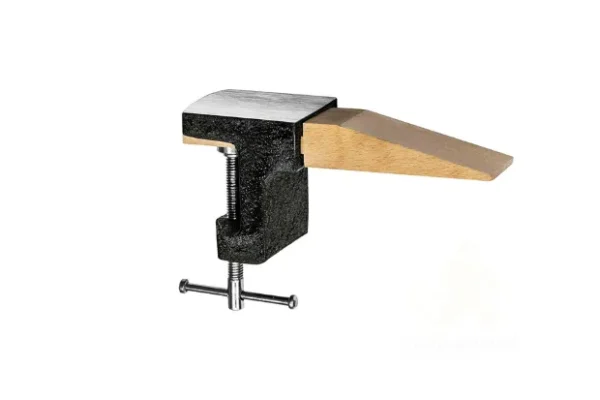
Bench anvils are smaller anvils designed for intricate work. Often mounted on workbenches, these anvils are lightweight and versatile, suitable for detailed metalworking tasks.
- Key Features:
- Compact size for bench-top use.
- Multiple faces for various tasks such as bending and flattening.
- Often includes clamps or mounts for stability.
- Uses: Ideal for jewelers, small-scale metalworkers, and hobbyists working on precision projects.
4. Jeweler’s Anvils
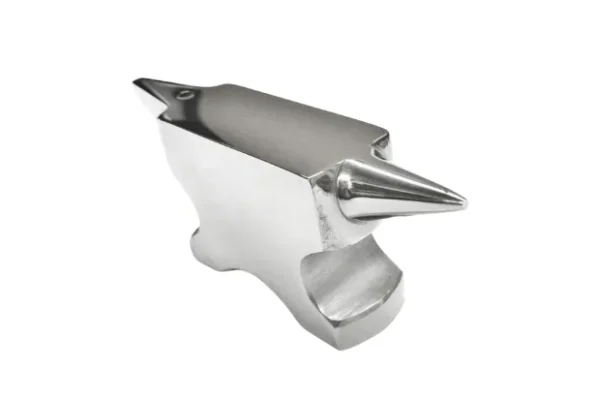
Jeweler’s anvils are small, lightweight, and built for delicate metalworking. With a smooth, polished surface, they allow jewelers to shape precious metals without causing scratches or damage.
- Key Features:
- Very small and lightweight for fine work.
- Smooth surface to protect soft metals.
- Available in multiple shapes for detailed tasks.
- Uses: Essential for jewelry making, creating fine metal crafts, and other precision metalworking tasks.
5. Stake Anvils
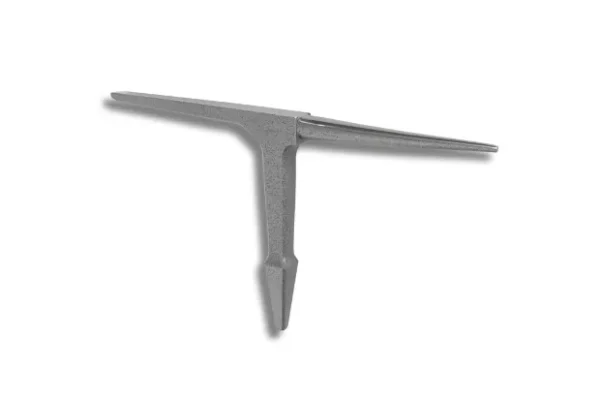
Stake anvils are unique for their portability and versatility. With a spiked base, they can be driven into a workbench or solid surface, providing a secure foundation for various metalworking tasks.
- Key Features:
- Spiked base for secure mounting.
- Available in different shapes and sizes.
- Portable and adaptable to various environments.
- Uses: Perfect for fieldwork or mobile workstations where a traditional anvil isn’t practical.
6. Double Horn Anvils

Double horn anvils feature two horns—one rounded and one tapered—offering increased versatility for shaping metal into complex forms. These anvils provide more options for bending and curving metal, making them popular in decorative metalworking.
- Key Features:
- Two horns for enhanced shaping versatility.
- Large face for general hammering.
- Includes hardie and pritchel holes for tool use.
- Uses: Suitable for blacksmiths and artisans who work on complex shaping projects, such as decorative ironwork.
7. Colonial Anvils
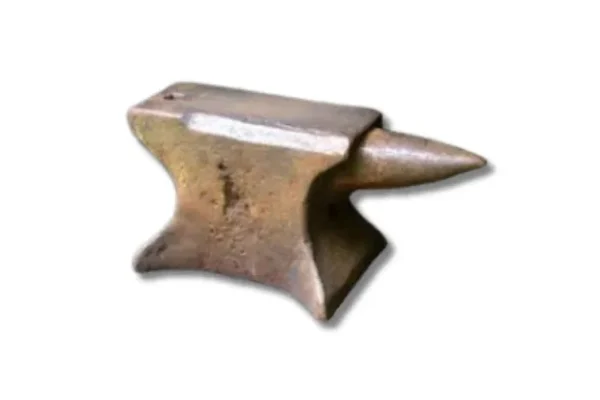
Colonial anvils replicate traditional designs and are often used in historical reenactments or restoration work. They are built with a large, flat face and a single horn, preserving the look and feel of classic blacksmithing tools.
- Key Features:
- Historic design with a single horn.
- Often includes decorative elements.
- Large, flat face for traditional metalworking tasks.
- Uses: Ideal for blacksmiths interested in traditional techniques, as well as for historical reenactments and restoration projects.
Choosing the Right Anvil for Your Needs
Selecting the right anvil depends on your specific requirements and the type of work you’ll be performing. Here are a few factors to consider when choosing an anvil:
- Weight: Heavier anvils provide better stability, but they’re less portable. Choose a weight that suits your workspace and intended use.
- Material: Steel anvils are more durable and wear-resistant than cast iron, making them ideal for heavy-duty tasks.
- Purpose: Consider the type of metalworking you’ll be doing. Blacksmiths may benefit from a traditional blacksmith anvil, while jewelers will find a jeweler’s anvil more suited to their needs.
- Quality: Investing in a quality anvil from a reputable manufacturer ensures longevity and reliability in your projects.
Conclusion: The Timeless Utility of Anvils
Anvils have stood the test of time as essential tools in metalworking. From blacksmithing to jewelry making, these robust tools continue to play a pivotal role across various industries. By understanding the different types of anvils available, you can make an informed decision on which anvil best suits your needs. Whether you’re shaping horseshoes, crafting jewelry, or working on intricate metal projects, a quality anvil is an investment in precision, efficiency, and durability.
Anvils aren’t just tools—they’re a testament to centuries of craftsmanship and innovation. So the next time you see one, take a moment to appreciate its rich history and ongoing significance in the world of metalworking.


